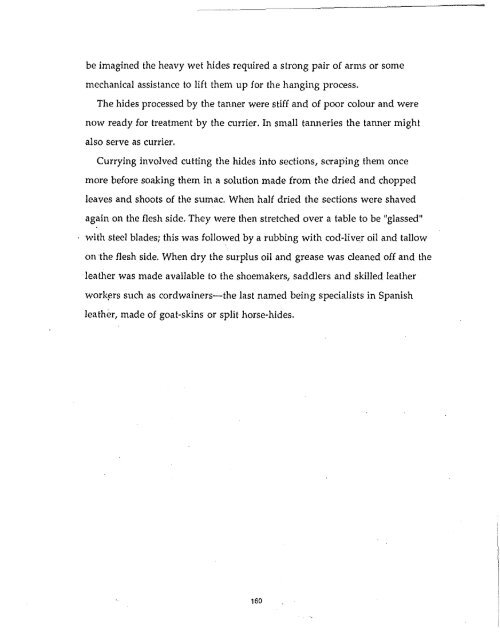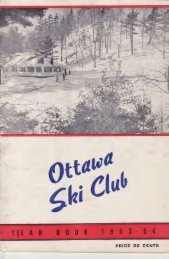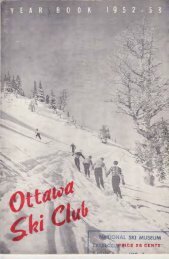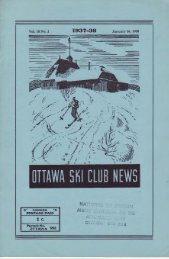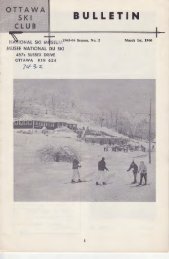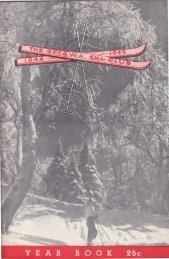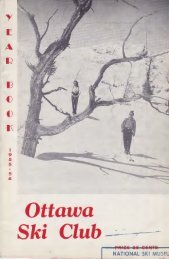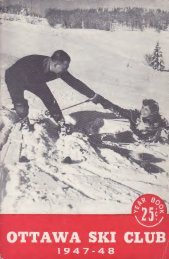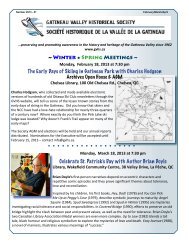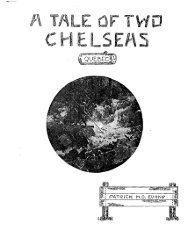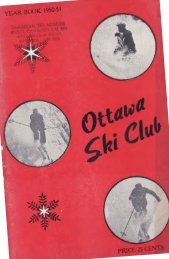Appendix A - the Gatineau Valley Historical Society
Appendix A - the Gatineau Valley Historical Society
Appendix A - the Gatineau Valley Historical Society
Create successful ePaper yourself
Turn your PDF publications into a flip-book with our unique Google optimized e-Paper software.
e imagined <strong>the</strong> heavy wet hides required a strong pair of arms or some<br />
mechanical assistance to lift <strong>the</strong>m up for <strong>the</strong> hanging process.<br />
The hides processed by <strong>the</strong> tanner were stiff and of poor colour and were<br />
now ready for treatment by <strong>the</strong> currier. In small tanneries <strong>the</strong> tanner might<br />
also serve as currier.<br />
Currying involved cutting <strong>the</strong> hides into sections, scraping <strong>the</strong>m once<br />
more before soaking <strong>the</strong>m in a solution made from <strong>the</strong> dried and chopped<br />
leaves and shoots of <strong>the</strong> sumac. When half dried <strong>the</strong> sections were shaved<br />
again on <strong>the</strong> flesh side. They were <strong>the</strong>n stretched over a table to be "glassed"<br />
with steel blades; this was followed by a rubbing with cod-liver oil and tallow<br />
on <strong>the</strong> flesh side. When dry <strong>the</strong> surplus oil and grease was cleaned off and <strong>the</strong><br />
lea<strong>the</strong>r was made available to <strong>the</strong> shoemakers, saddlers and skilled lea<strong>the</strong>r<br />
work~rs such as cordwainers-<strong>the</strong> last named being specialists in Spanish<br />
lea<strong>the</strong>r, made of goat-skins or split horse-hides.<br />
160


